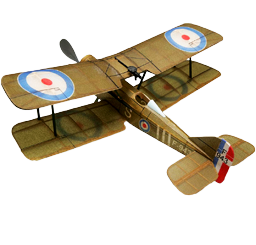

Welcome to our model aircraft community, providing resource and discussion on topics like free flight, indoor flight, R/C flight, gliders, rubber powered airplanes, micro-flight, and more.
LATEST NEWS
-
 Welcome back to Small Flying Arts!
Welcome back to Small Flying Arts!We are back up and running for good. With the help of our steadfast volunteers and some very hard work, SFA is back online. We look forward to getting the community back together to continue in SFA's great tradition.
LOST AND FOUND
-
 Those missing parts of the site are coming back!
Those missing parts of the site are coming back!Can it be possible? Bringing back many of those beloved articles and images that were once thought lost forever has now become a reality. We're tearing apart old computers, laptops and web archives to get as much content back online as we can.
FEATURED ARTICLES
-
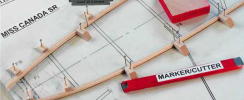 A Faster Method For Stick FuselagesPosted on September 22, 2010
A Faster Method For Stick FuselagesPosted on September 22, 2010By Marcel Lavoie (Marcels new email - please update your records if necessary)
Around the turn of the century I came up with a method of building box fuselages from stick balsa by lifting up the longerons when building a side frame... [read more]
-
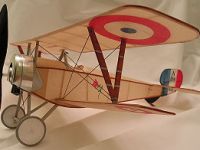 Nieuport 11c – a 13 inch Peanut-Scale FF ModelPosted on July 25, 2010
Nieuport 11c – a 13 inch Peanut-Scale FF ModelPosted on July 25, 2010This model started out as a Nowlen Aero Peanut scale kit. I was pretty happy with some of the kit features,... [read more]
-
 Jiro Sugimoto’s Amethyst FalconPosted on July 25, 2010
Jiro Sugimoto’s Amethyst FalconPosted on July 25, 2010Jiro Sugimoto is one of the true master craftsmen of Free Flight scale. His models have been featured in the famous... [read more]
-
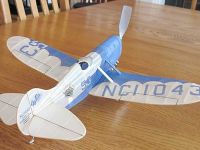 Gee Bee Model DPosted on July 25, 2010
Gee Bee Model DPosted on July 25, 2010Granville Brothers airplanes have always been among my favorites, and ever since my recent re-entry to the free flight hobby... [read more]
-
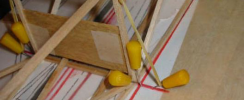 Box-Frame Fuselage ConstructionPosted on July 25, 2010
Box-Frame Fuselage ConstructionPosted on July 25, 2010Here's a procedure for making box frames that Tony Peters showed me when I was just starting out in this hobby.... [read more]
-
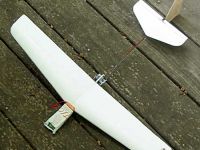 The Candy Wrapper – a 26″ Side-Arm-Launch RC GliderPosted on July 3, 2010
The Candy Wrapper – a 26″ Side-Arm-Launch RC GliderPosted on July 3, 2010This article describes the design, construction, and flying of the easiest to build, cheapest little RC glider for schoolyard thermal hunting... [read more]
-
 Quick Tip: Shaping Curves Into LongeronsPosted on June 20, 2010
Quick Tip: Shaping Curves Into LongeronsPosted on June 20, 2010Many fuselage plans call for bends in the longerons, particularly around the nose area. If the curve is very slight, we... [read more]
Search the site
Help support SFA
-
-
